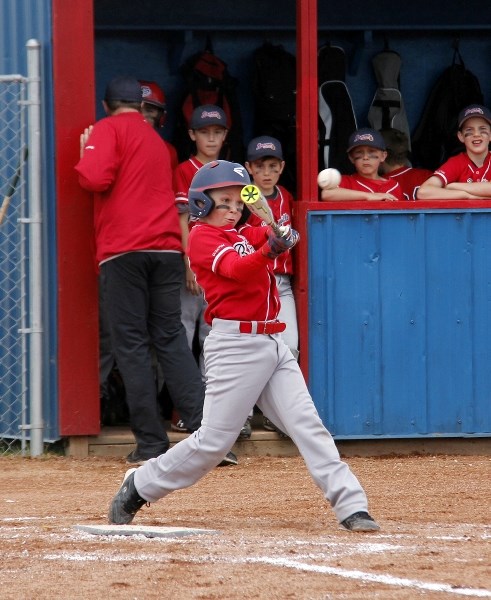Getting youth involved in more than one sport could be the key to their personal and athletic development. Players looking to get the extra edge in their sport of choice may want to look into trying something new.
Getting youth involved in more than one sport could be the key to their personal and athletic development.
Players looking to get the extra edge in their sport of choice may want to look into trying something new.
"They develop their skills; hand-eye coordination, physical fitness, cardio, those kinds of things. Certain sports compliment other ones in different ways," explained Travis Farrer, president of Lakeland Minor Ball.
Farrer is also heavily involved in minor hockey in Cold Lake and Bonnyville. While he recognizes each sport carries a different skill set, Farrer says even hockey players could find benefit in picking up baseball.
"Ball may not be the same sport, but it builds hand-eye coordination when you're hitting or catching a ball. You use that on the ice," he said.
By taking a break from their primary sport, young athletes get the chance to train different parts of their bodies. According to Lakeland Panthers AA coach Chad Emigh, the more sports the better.
"You're training more muscles in the body and creating a well-rounded athlete, as opposed to focusing on a specific skill set," said Emigh.
When it comes to high-level hockey, Emigh said the variety of sports players have tried can even effect scouts' decisions.
If two athletes had nearly the same skill, size, and attitude, building their resume could prove to be a deal breaker.
"It might set them apart. If one of the kids played lacrosse or baseball, teams will take that over guys who have played hockey their whole life," explained Emigh.
For the athletes who don't have aspirations of reaching the professional ranks, spreading their talents is still beneficial.
Switching from sport to sport will help youth meet new people, and make new friends.
"Kids' sports is not all about athlete building, it's more about people building in the end. When you're exposing them to different sports, they'll build friendships and become better athletes," explained Emigh.
In addition to building social skills, changing it up can also prevent youth from becoming tired of their chosen sport in the years to come.
With hockey season running from October to April, and summer hockey picking up in May, some players are on the ice year-round.
"Kids don't know what they don't know. Of course they're going to say 'yeah I love hockey,' but when they get older you may realize you've created a bit of burnout," Emigh explained.
To avoid tiring athletes out, Emigh suggests at the very least taking a break from their primary sport.
For the players wondering which alternatives will help them develop best, the answer is any one. According to Emigh, each sport has it's own unique set of benefits.
"Really all sports can translate into each other, take hockey and swimming for example. Competitive swimmers are in phenomenal shape. If hockey players did that in the summer they almost wouldn't have to do any off-ice training."
Soon, Panthers hopefuls will suit up for tryouts, and the hockey season will get underway. Until then, one of their coaches wants to see them out on the diamond or making waves in the pool.
"The kids that I see around me all love the game, but I think it's very important to get them away from that focus as well. We want them to develop other skills too."
